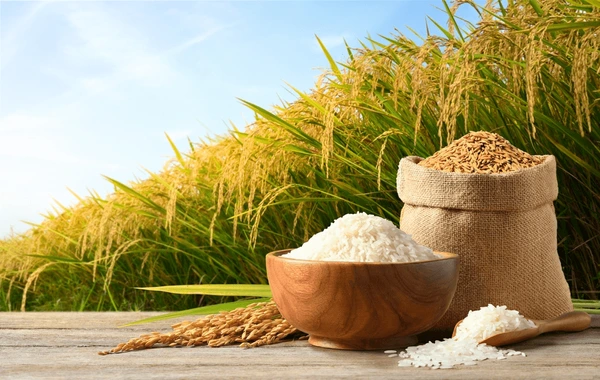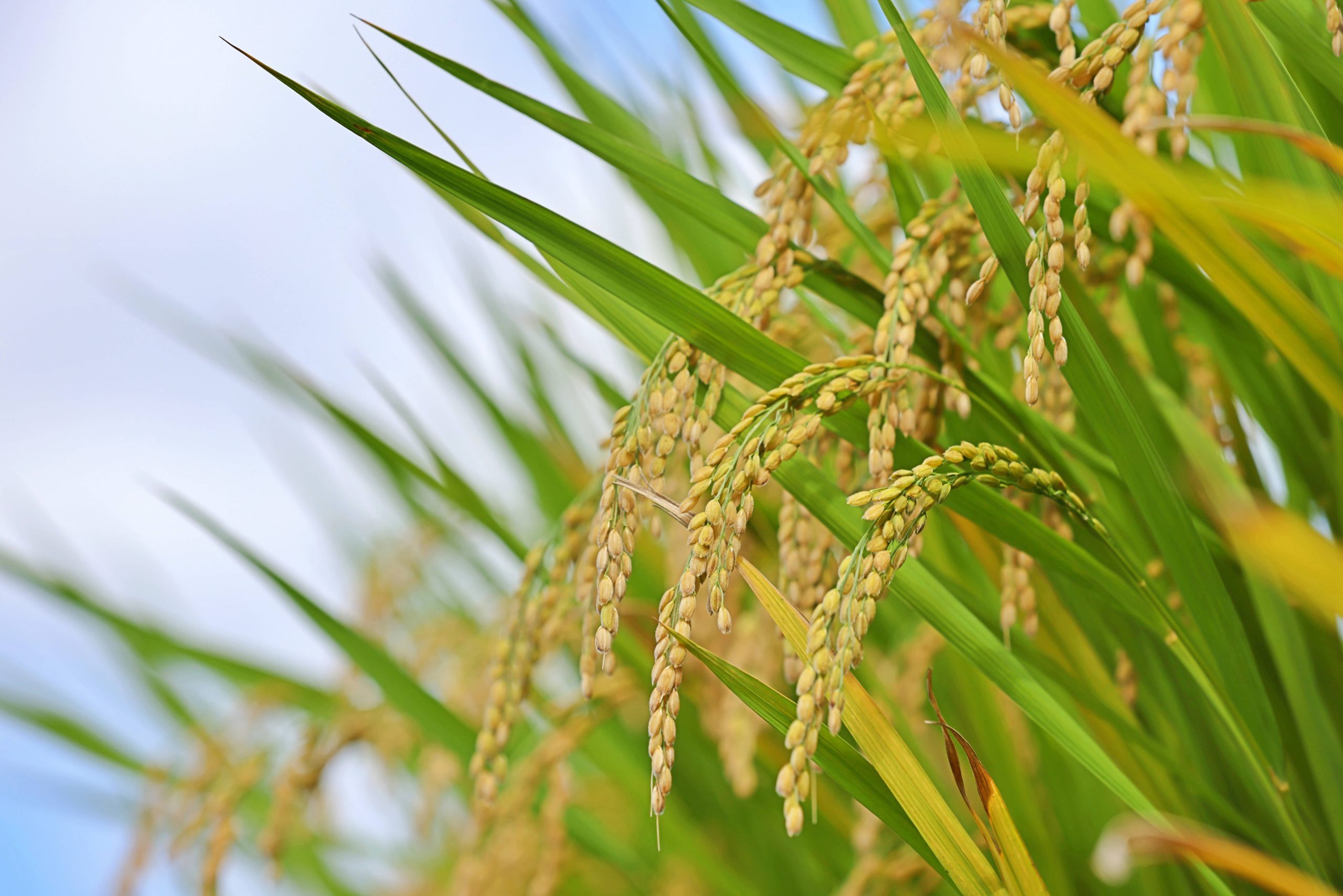Exploring the Different Types of Rice Crops Grown Worldwide
Rice, one of the world’s oldest cultivated crops, serves as a staple food for more than half of the global population. Its significance is immense, not just as a food source but also as a symbol of cultural heritage, economic stability, and agricultural sustainability. There are thousands of rice varieties grown worldwide, each with its unique characteristics and uses. Understanding these varieties is essential for farmers, consumers, and industries involved in rice cultivation and trade. This blog will explore the different types of rice crops grown worldwide, highlighting their key attributes, cultivation practices, and regional significance.
In the realm of agriculture, organic natural farming serves as a beacon of sustainability and quality, particularly when it comes to cultivating rice crops. By abstaining from synthetic pesticides and fertilizers, organic rice farming embraces a holistic approach that nurtures both the soil and the crop itself.
1. Basmati Rice
Basmati rice is perhaps the most well-known variety globally, especially in South Asia and the Middle East. The word “Basmati” comes from the Sanskrit word meaning “fragrant,” which is fitting as this rice is prized for its aromatic scent and delicate flavor. Basmati rice is long-grain and known for its light and fluffy texture once cooked, making it perfect for biryanis, pilafs, and other traditional dishes.
Geography and Cultivation
Basmati is primarily grown in the Indian subcontinent, specifically in regions like the Himalayan foothills in India and Pakistan. These areas have the ideal climate for growing Basmati rice, with cool nights and sunny days. The rice requires a lot of water and can thrive in both flooded fields and dry soil conditions, though it is typically cultivated in flooded paddies for optimum yield.
Farmers who specialize in organic natural farming of rice crops are dedicated to promoting biodiversity and enhancing the natural ecosystem of their fields. Through meticulous care and attention to detail, these professionals ensure that every step of the rice cultivation process aligns with organic principles, resulting in rice that is free from harmful residues and chemicals, and rich in nutrients and flavor.

2. Jasmine Rice
Jasmine rice, also known as Thai fragrant rice, is another globally recognized variety, particularly in Southeast Asia. Like Basmati, Jasmine rice is aromatic, but it differs in texture and flavor. Jasmine rice has a slightly sticky consistency when cooked, making it ideal for pairing with stir-fries and grilled meats.
Geography and Cultivation
Jasmine rice is predominantly grown in Thailand, Cambodia, and Vietnam, where it holds cultural and culinary importance. The warm climate and abundant rainfall in these regions support its growth, and it is typically cultivated in the traditional wet rice farming method. The grains are long and slightly translucent, with a distinctive floral scent that develops as it cooks. Jasmine rice is often exported worldwide, making it a key player in global rice trade.
3. Arborio Rice
Arborio rice, a short-grain rice, is famous for its use in Italian dishes like risotto. This rice variety is highly starchy, which gives it the creamy texture that is a hallmark of well-prepared risotto. Arborio rice absorbs flavors well, making it an excellent choice for dishes with rich sauces and broths. This method not only protects the environment from harmful chemicals but also yields rice that is rich in nutrients and taste. With a dedication to preserving ecosystem diversity and promoting soil health, organic natural farming for rice crops stands as a prime example of how mindful cultivation practices can result in superior and sustainable outcomes.
Geography and Cultivation
Arborio rice is primarily grown in the Po Valley region of northern Italy, specifically in areas like Piedmont, Lombardy, and Veneto. It thrives in the temperate climate of northern Italy, where the rich, fertile soil and ample water supply create ideal conditions for its cultivation. The grains are plump and oval, with a firm texture that retains its shape even after long cooking times.
4. Sticky Rice (Glutinous Rice)
Sticky rice, also known as glutinous rice, is a short-grain variety that is prized for its sticky, clumpy texture when cooked. Despite its name, sticky rice does not contain gluten but has a high amount of amylopectin, a component of starch that makes the grains sticky. This type of rice is a key ingredient in many Asian cuisines, especially in Laos, Thailand, and Vietnam.
Geography and Cultivation
Sticky rice is widely cultivated in Southeast Asia, where it forms an integral part of the local diet. In Thailand, for instance, it is often served with grilled meats or used in desserts like mango sticky rice. The rice is typically grown in areas with rich, well-watered soil. Sticky rice requires careful cultivation practices, as it needs to be harvested at the right time to achieve its signature texture.
5. Sushi Rice
Sushi rice is a type of short-grain rice used specifically for preparing sushi, a popular Japanese dish. The rice is sticky and slightly sweet, which allows it to hold its shape when packed into the nori (seaweed) and other sushi ingredients. Sushi rice is typically seasoned with a mixture of vinegar, sugar, and salt, giving it a distinct tangy flavor that complements the freshness of the fish.
Geography and Cultivation
Sushi rice is grown in Japan, where rice cultivation has a long and rich history. It thrives in the wet paddies found in Japan’s temperate climate. The rice needs to be cultivated carefully to maintain its moisture content and sticky texture, and it is often harvested by hand to ensure quality. Sushi rice is a staple in Japanese cuisine and is exported around the world, contributing to the global popularity of sushi.
6. Black Rice (Forbidden Rice)
Black rice, also known as “forbidden rice” due to its historical association with Chinese emperors, is a type of medium-grain rice with a striking black color. The color comes from the high anthocyanin content, a type of antioxidant found in the rice’s outer layer. Black rice has a nutty flavor and a chewy texture and is often used in salads, puddings, and savory dishes.
Geography and Cultivation
Black rice is primarily grown in China, Thailand, and other parts of Southeast Asia. The rice requires specific growing conditions, including warm temperatures and fertile soil. In the past, black rice was considered a delicacy reserved for royalty, but today it is grown commercially and is available in health food markets worldwide. Due to its high nutritional value, black rice has gained popularity as a “superfood.”
7. Brown Rice
Brown rice is a whole-grain rice that retains the bran and germ layers, giving it a chewier texture and a nutty flavor compared to white rice. It is considered healthier due to its higher fiber content and greater nutritional value. Brown rice is versatile and can be used in a variety of dishes, from stir-fries to side dishes.
Geography and Cultivation
Brown rice is grown in many regions worldwide, including the United States, India, China, and Indonesia. It is cultivated in both irrigated and non-irrigated conditions, though it typically grows in wet paddies to ensure maximum yield. Brown rice is often marketed as a healthier alternative to white rice, especially in Western countries.
8. Red Rice
Red rice is a type of rice that has a reddish-brown color due to the presence of anthocyanins in its outer layer. It has a nutty flavor and a firm, chewy texture. Red rice is often used in salads, pilafs, and as a side dish.
Geography and Cultivation
Red rice is grown in parts of Asia, especially in India, Bhutan, and Thailand. The rice is typically cultivated in areas with specific growing conditions, such as high-altitude regions in the Himalayas. In these areas, the rice benefits from cool nights and warm, sunny days. Red rice is considered a nutritious variety, with many health benefits attributed to its high fiber and antioxidant content.
Conclusion
Rice is a versatile and vital crop with numerous varieties grown worldwide, each offering distinct flavors, textures, and nutritional benefits. From the aromatic Basmati rice of India to the creamy Arborio rice of Italy, and the sticky rice of Southeast Asia, each type of rice reflects the agricultural practices, climate, and culture of the region where it is cultivated. Understanding these rice varieties not only helps in appreciating their global significance but also contributes to making informed choices about rice consumption and cultivation. As rice continues to be a fundamental food source, learning about its different types can enhance both culinary experiences and global food security.














Post Comment